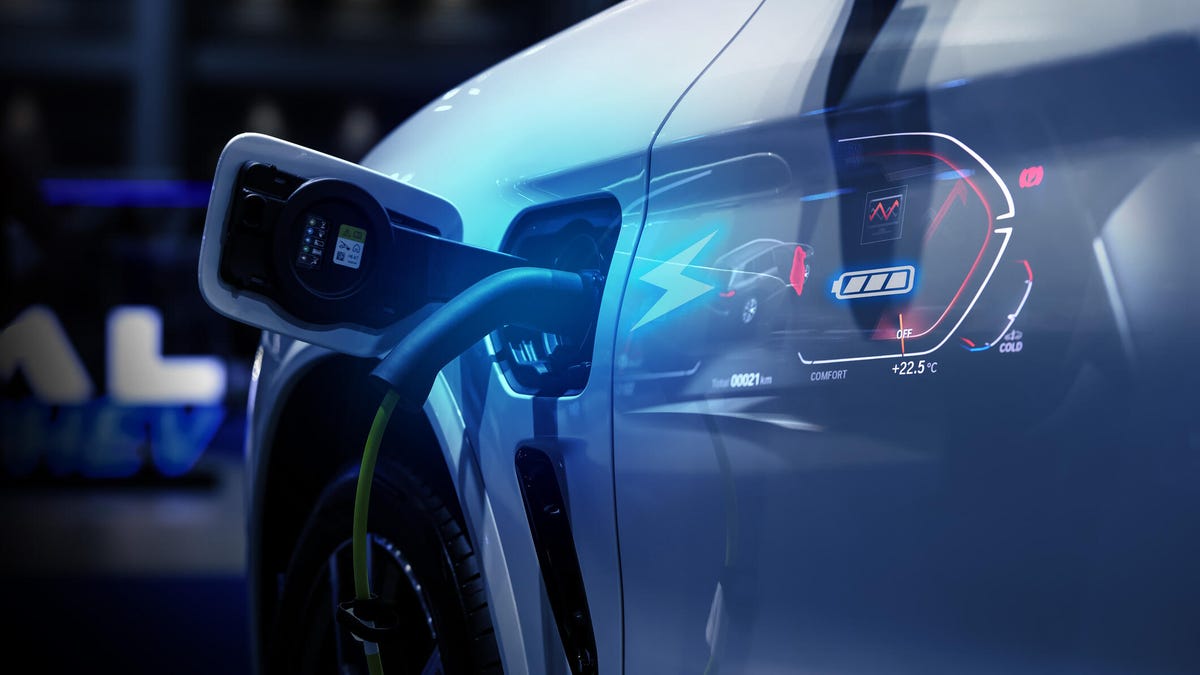Google Maps Will Use Artificial Intelligence to Help You Find EV Chargers Everywhere
Electric vehicle charging locations are getting a boost on Google Maps, thanks to AI.

Electric-vehicle drivers will soon be able to get more information about charging stations on their routes.
Google Maps is getting an upgrade that'll help electric vehicle owners keep their cars charged while out and about. And the company's using artificial intelligence to do it.
Google said it's adding real-time details about chargers to its Google Maps app when users indicate they're driving an EV. Now, as they're traveling, EV drivers will see details about the charger's status, location and how many plugs are available. Google Maps will also include expected range when drivers use turn-by-turn directions, and provide suggestions based on the car's battery level.
And, if a driver is using Google to plan a trip, they can now filter hotels by whether they have EV charging as well.
"Electric vehicle ownership is on the rise, which means more people are looking for ways to charge their car — whether they're on the go or planning their drive," a Google representative wrote in a blog post.
The moves mark the latest way Google is infusing AI into its products. Google for years had been considered a leader in AI, until the surprise success of OpenAI's ChatGPT nearly two years ago. Ever since, Google has been racing to add buzzworthy AI features to its apps and services, including the launch of its Bard chatbot, later renamed Gemini. The company has also been adding features such as its Magic Editor for photos, easily allowing people to unblur shots and erase unwanted objects, among other things.
Google's expected to announce even more AI products during its Google I/O developer conference, which is set to begin May 14.
For hands-on CNET reviews of generative AI products including Gemini, Claude, ChatGPT and Microsoft Copilot, along with AI news, tips and explainers, see our new AI Atlas resource page.
Smarter Google Maps
Google said its AI additions to Google Maps will help power features such as summaries of customer reviews for individual EV chargers. The company also intends to use AI to help drivers find chargers in less obvious places, such as inside a garage or on the other side of a parking lot. An example Google provided included directions such as, "Enter the underground parking lot and follow the signs toward the exit. Just before exiting, turn right."
Google also plans to prompt users to add details about their experience as well, such as how long they waited and whether they were able to successfully charge up their vehicle.
Google said it will begin rolling the feature out for free around the world in the coming months, starting with vehicles with Google built-in infotainment, such as some Volvo and Polestar models. Google added some EV-related features to its other driving assistant app, Waze, last month.
Read more: Introducing AI Atlas, Your Guide to Today's Artificial Intelligence
How it'll work
With EVs now representing about 7% of new US car sales, and more than 25% of new car sales in Google's home state of California, it's likely these new map features will become popular.
Google said many of the EV-specific capabilities for Google Maps will be automated. Some EVs have a specialized version of Google Maps "Built-In" to their infotainment systems, allowing the app to keep track of the car's charging status, speed and other details.
When people plan a route with an EV, Google Maps will also recommend boost charging stations along the way based on the battery's charge level, and will adjust the projected arrival time to include charging if selected.
For those who don't have Google-powered infotainment systems, the company plans to add some of its EV features to its mobile version of Google Maps as well, in the coming months.
Editors' note: CNET used an AI engine to help create several dozen stories, which are labeled accordingly. The note you're reading is attached to articles that deal substantively with the topic of AI but are created entirely by our expert editors and writers. For more, see our AI policy.

